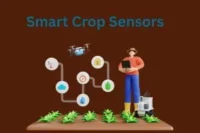20 Powerful Benefits of Indoor Farming: The Future of Food is Inside
Published: 28 May 2025
At first, the idea of growing food inside your home sounded… strange. Isn’t farming supposed to happen outdoors, in big open fields, under the sun? I used to wonder how plants could even survive—let alone thrive—without soil, rain, or real sunlight. Was it really possible to grow fresh vegetables or herbs in a cramped apartment or on a kitchen shelf? The more I looked into it, the more surprised I became. What started as a curiosity quickly turned into a realization: indoor farming isn’t just possible—it might actually be the future of how we grow food.
Year-Round Crop Production
- Grows food continuously, regardless of season or climate.
- Ensur
- Reduces reliance on imported and seasonal crops.

Uses Up to 90% Less Water
- Hydroponic and aeroponic systems reuse water in closed loops.
- Prevents water loss through evaporation and runoff.
- Suitable for regions with drought or limited water resources.
Perfect for Small Urban Spaces
- Can be set up in apartments, rooftops, containers, or garages.
- Vertical farming allows for more crops in compact areas.
- Brings food production closer to consumers in cities.
No Harmful Pesticides or Herbicides
- Controlled environments naturally reduce pests and diseases.
- Eliminates the need for toxic sprays and chemical treatments.
- Results in cleaner, healthier, and safer food.
High Yields in Less Space
- Vertical stacking and optimized lighting increase plant density.
- Maximizes productivity per square foot of space.
- It goes
Lowers Carbon Emissions
- Reduces the need for long-haul food transportation.
- Eliminates use of heavy agricultural machinery.
- Shrinks the carbon footprint of food production.
Fresher and More Nutritious Produce
- Crops are harvested right before consumption.
- Maintains higher levels of vitamins and flavor.
- Of
Minimizes Food Waste
- Precise growing methods reduce overproduction.
- Local distribution minimizes spoilage in transit.
- Harvested based on demand to prevent excess waste.
Automation and Smart Farming Technology
- Uses sensors and systems to monitor and control plant needs.
- Automated watering, lighting, and feeding increase efficiency.
- Reduces manual labor while improving crop consistency.
Total Control Over Growing Conditions
- Growers manage temperature, humidity, light, and nutrients.
- Prevents unpredictable crop failures caused by weather.
- Ensures optimal growing environment for each plant type.
Greater Food Security
- Local food production strengthens community resilience.
- Reduces depth
- Supports stable access to fresh food during crises or shortages.
Boosts Mental and Emotional Wellness
- Exposure to plants improves mood and reduces stress.
- Gardening indoors provides a calming, mindful activity.
- Creates a peaceful and inspiring living environment.
Safer Food with Fewer Contaminants
- No risk of soil contamination or polluted runoff.
- Clean and sanitary environment reduces foodborne illnesses.
- Especially beneficial for children and people with health concerns.
Educational for Kids and Adults
- Teaches biology, sustainability, and responsibility.
- Engages children in interactive, hands-on learning.
- Encourages a stronger connection to food and nature.
Saves Money Over Time
- Cuts down grocery bills by growing herbs and greens at home.
- Reduces spending on organic or specialty produce.
- Becomes more cost-effective the longer you grow.
AND
- Provides food security during pandemics or supply disruptions.
- Reduces reliance on grocery stores or external suppliers.
- This
Doubles as Home Décor
- Adds greenery and life to indoor spaces.
- Improves indoor air quality and natural ambiance.
- Enhances home aesthetics while being functional.
Preserves Land and Natural Habitats
- Indoor systems don’t require farmland or soil.
- Helps combat deforestation and soil degradation.
- Protects natural ecosystems from agricultural encroachment.
Enhan
- Being around plants boosts memory, creativity, and focus.
- Improves mental clarity and productivity.
- Ideal for workspaces, classrooms, or home offices.
Scalable and Flexible

- Easily tailored to different budgets and space sizes.
- Can start with a single pot and expand to a full system.
- Adaptable for hobby growers and commercial ventures alike.
FAQs about Internet
Here are some of the most frequently asked questions about the 20 Powerful Benefits of Indoor Farming: The Future of Food is Inside
Indoor farming means growing plants inside buildings using controlled environments like artificial light, temperature, and water systems. Unlike traditional outdoor farming, it doesn’t depend on weather or soil.
Yes, you can! Many indoor farms use hydroponics (water-based) or LED lighting instead of soil and sunlight. These systems are designed to give plants exactly what they need to grow.
You can definitely try it at home! Even a small shelf or windowsill is enough to grow herbs, leafy greens, or microgreens. Indoor farming works for both beginners and large-scale growers.
Indoor farming systems recycle water, so very little gets wasted. Unlike outdoor farming where water runs off or evaporates, indoor systems reuse the same water again and again.
Actually, the opposite is true! Because the plants are grown in perfect conditions and harvested fresh, they often taste better and have more nutrients than store-bought produce.mn
Conclusion
The article “20 Powerful Benefits of Indoor Farming: The Future of Food is Inside” outlines how indoor farming offers consistent, sustainable, and high-yield food production regardless of climate or space. Key advantages include year-round harvesting, water efficiency, chemical-free crops, reduced food waste, and better nutrition. It also highlights emotional and societal benefits like improved mental wellness, food security, and environmental protection. Understanding these benefits is crucial for anyone interested in sustainable living, self-sufficiency, or modern agriculture, as indoor farming represents a forward-thinking solution to global food and environmental challenges.

- Be Respectful
- Stay Relevant
- Stay Positive
- True Feedback
- Encourage Discussion
- Avoid Spamming
- No Fake News
- Don't Copy-Paste
- No Personal Attacks

- Be Respectful
- Stay Relevant
- Stay Positive
- True Feedback
- Encourage Discussion
- Avoid Spamming
- No Fake News
- Don't Copy-Paste
- No Personal Attacks





